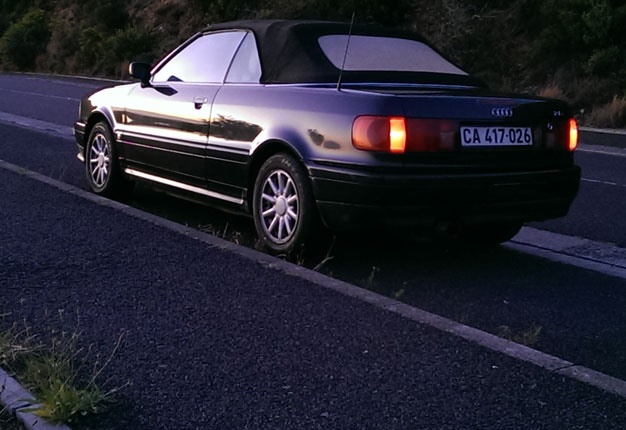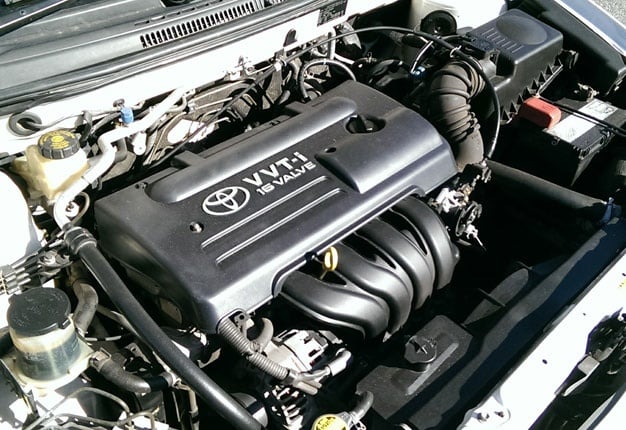
Not everyone can afford a new car, well, with exception of the 36 794 fortunate South Africans who registered their new cars in January 2017.
New car sales in SA have flitted around the 35 000 mark for the last five years, even though that means that 547 442 units were sold in 2016, compared to 617 648 in 2015.
But new vehicles sales are clearly the junior partner when compared to used car sales.
SA car industry
According to WesBank, data showed that application volumes for new vehicles amounted to 38 343, versus 89 390 for used vehicles in May 2016.
Sure, everybody loves that new car smell but a second-hand car offer better value, while leaving your wallet intact, if you follow a few simple steps.
Used cars are also likely to attract a much lower insurance premium than new cars, and feature-for-feature, you can usually get more bang for your buck.
Yes, let’s set aside your fears of being stuck along the side of the road with these tips on how to pick your new (used) car, without having someone take advantage of you.
Even you have an 'OBD2 code' reader, some sellers are able to clear codes without fixing problems.
Step 1: Don't think with your heart
The first step is often the hardest; don’t fall in love with a car. For a used-car dealer, a smitten customer makes for easy pickings and they will easily sell you a rolling disaster. It could be the vehicle you dreamt of owning as a child, the car of your first kiss, or that sports car you loved when it came out... don't think with your heart.
When you set out to buy a car, the trick is to search far and wide and consider all your options. The internet can be your friend in this regard.
This might not work for everyone, but I’ve purchased a lot of cars and have a rule of not even considering the first three cars I look at; In fact, those viewings are minimally more than scouting expeditions.
Find out what's there and weigh-up each vehicle's pros and cons - ask a Group 1 Hyundai representative about the used Hyundai i10 for sale.
Step 2: Stay mainstream
If you’re buying new, by all means go berserk and purchase something exotic. If you're searching the second-hand market, mainstream is safer, and here’s why; You may have minimal or no factory warranty so the cost of maintenance will come straight out of your pocket.
An oil filter for a Toyota Corolla can cost as low as R60 but for a Renault more than R200. This escalates if you own a high-performance model.
But it’s more than simply considering the cost of parts.

Once the dealer cuts you loose, you need to explore independent service stations to keep your car in tip-top shape.
Typically, these mechanics will charge a premium for working on cars where the engine bay is more covered up than a mummy.
In terms of performance, you should ask yourself 'If this GTI, Type R or M3 is so good, why are they selling it?'
It’s hard to make generalisations but you would do well to stay away from high-performance cars mainly because those are the ones more likely to have been driven to death before they are sold. Unless you are knowledgeable about cars, have a decent mechanic and be prepared to pay a premium for parts.
Step 3: Watch people, not cars
This strategy has worked well for me buying several cars; Watch the seller while you talk about the car. Shifty behaviour is usually a sign that there’s something dodgy with the car.
Walk around the car and point out parts. Watch the sellers body language.
Look for signals that the seller is uncomfortable and follow your gut. There’s no harm in walking away, rather than being stuck with a lemon.
I once saw a great-looking model for sale but the private seller seemed rushed to make the sale. Luckily, I had a mechanic with me who pointed out a soapy residue in the oil – a tell-tale sign of a blown head-gasket.
Step 4: Testing and more testing
Don’t ever let on that you know anything about cars; rather have the seller talk about the car’s good points – and be sure to check the things he doesn’t talk about.
Specifically, check brake discs for uneven wear, check the colour of the oil (it should be golden brown, and not a dark colour) battery terminals should be clean, tyres should be in good condition with even wear, and the body should be straight. Check the body seams in the engine bay and boot to see whether it was repaired after a smash.
While the handbrake is up, give the car a mighty heave. Of course it should not move.
Be suspicious if the car has a "new" battery. Think about it, why would a person wanting to sell a car give you a battery worth R1000? Perhaps it's to hide something such as a faulty loom or alternator.
Ditto for new tyres that may be attempt to mask serious suspension or steering problems. And watch out for paint on body panels that may appear to be a different shade to the rest of the vehicle - this indicates the car has been in a crash.
Step 5: How to test drive
Never begin your test drive by jumping in and heading off.
Instead, have the seller switch on the ignition and let the vehicle idle. Walk around the car and test the wipers, lights and listen to the engine noise. Once it has been idle for awhile, switch it off.
Attempt to start the car with the headlights still on. If it doesn’t start immediately there may be an electrical problem. Check all light, aircon, electric window and mirror switches.
During your test drive, make sure you test all the gears, and include some kind of incline on your route. Feel for any “flat spots” in acceleration.
(Flat spots are where the acceleration momentarily stops, and picks up again. It could indicate ignition or injector issues.)
Listen for funny (not ha-ha) noises. Grinding sounds when you brake or change gear may indicate a serious mechanical fault and it’s best to walk away from a car that makes those sounds. There should also be no high-pitched squealing from V-belts.
Take a couple of minutes after the test drive to see if any fluids have leaked onto the ground. Oil or coolant could indicate a serious issue with oil seals, engine or cooling system.
Finally, does the vehicle “feel right” to you (this is where your gut comes into play)? If yes, do the deal.
Group 1 Hyundai offers great deals on pre-owned vehicles, such as a used Hyundai i10 for sale. Visit a Group 1 Hyundai dealership today, if you want to buy a used Hyundai i10 for sale that you can still rely on for years to come.
Article source: https://hyundaiowners.tumblr.com/post/169839830974/buying-used-car-in-sa-5-tips-to-get
No comments:
Post a Comment